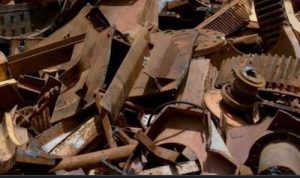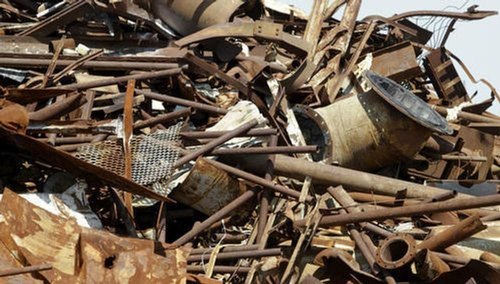Table of Contents
ToggleIntroduction
Scrap metal recycling is a vital aspect of both sustaining Australia’s economy and protecting the environment. The price of scrap metal in Australia plays a crucial role in this process. Although being a business owner, a scrapper, or merely an interested person makes one person value scrap metal prices in Australia. Price fluctuations depend on various factors, considering everything from demand and supply to global market situations. This article will discuss current trends and prices, influencing factors, and export trends of scrap metal within Australia.
Understanding Scrap Metal Pricing
The changeability of scrap metal prices is caused mainly by market factors such as the type of metal, purity, etc. Whether local or worldly, these fluctuations render prices quite unpredictable. Supply chains, economics, demand from industrialists, and many more events will determine scrap metal prices. Thus, it is upon keeping up with the market trends that one earns a decent price.
Current Scrap Metal Prices in Australia
Scrap metal prices in Australia vary depending on the type of metal. Below is a table showing the average prices per kilogram for different metals:
| Metal Type | Price per Kg (AUD) |
| Copper | $8 – $10 |
| Aluminium | $1 – $2.50 |
| Brass | $4 – $6 |
| Stainless Steel | $1.50 – $3 |
| Lead | $2 – $3 |
| Iron | $0.10 – $0.50 |
Prices may vary depending on the location and condition of the metal.
Scrap Metal Market Trends in Australia
The trend for the price of scrap metal in Australian markets is on a steady rise, largely owing to the increasing global demand for recycled materials. It also mentions that many industries like construction and manufacturing are dependent on recycled metal as a means of cost-cutting and environmental emissions reduction. In the past few years, it has really ramped up the volume of exports, and above all, to countries such as China and India.
Factors Affecting Scrap Metal Prices
Several factors influence scrap metal prices in Australia, including:
Global Demand:
Scrap metal prices rise when international demand increases, driven by industrial growth and infrastructure projects. Higher demand from major economies leads to price surges.
Supply Availability:
If metal supply is limited, prices increase due to scarcity, while an oversupply lowers prices by reducing competition among buyers. Market balance is crucial in determining rates.
Economic Conditions:
Economic slowdowns decrease industrial production, reducing the need for scrap metal. This lowers demand and causes prices to drop, while economic booms drive prices up.
Recycling Rates:
High recycling rates in Australia increase metal supply, affecting overall prices. More recycled metal means lower dependence on raw materials, influencing market rates.
Government Regulations:
Export policies, environmental laws, and trade restrictions impact metal pricing. Strict regulations can limit supply and raise prices, while relaxed policies can boost availability and lower costs.
The Role of Metal Recycling in Australia
Australia boasts a fully functional metal recycling industry. Instead of mining, the energy savings and landfill waste reduction are done through scrap metal recycling. Such metals can be obtained from companies or individuals who provide their scrap recycling facilities, which then process the materials for reuse into new products.
Scrap Metal Export Statistics
Australia exports scrap metals in large quantities to several countries. Among the recent export statistics for scrap metals reflect the major destinations China, India, and South Korea. The health of the export market is primarily owing to the global demand for lower-cost raw materials.
Where to Sell Scrap Metal in Australia

Scrap metals can all be sold into scrapyards and metal dealers. The best option is just to check out various rates before going for the best price. Besides, such companies offer pickup facilities for bulk scrap metals.
How to Get the Price of Scrap Metal in Australia
- Sort your metals to separate different types and maximize value.
- Remove contaminants, as clean metals fetch higher prices.
- Stay updated on market trends to sell at the best time.
- Choose the right buyer by comparing offers from different recycling centers.
- Store metals properly to prevent rust and degradation.
The Future of Price of Scrap Metal in Australia
The price of scrap metal in Australia will keep changing according to industrial or economic trends. Experts, however, predict that increased sustainability measures will entrench more rivalry into the market, hence raising prices because demand for recycled metals increases. Advanced technology within recycling methodologies could ramp up efficiency and demand.
Conclusion
The recycling industry of scrap metals is a rapidly growing industry in Australia, and the price of scrap metal in Australia has price fluctuations on account of numerous reasons. Be it the sale of scrap metals or entry into the recycling industry, understanding scrap metal prices at any time and the various factors affecting the market will always help in making informed decisions. Catching up on the export statistics of scrap metals and the rates of metal recycling in Australia will ever be leading ahead in competition.
FAQs
Why do prices of scrap metals fluctuate frequently?
Global demand, the level of supply, the economy, and recycling rates all affect the price change in scrap metals.
Where should I look for the latest metal prices in Australia among scraps?
All you need to do is search for websites that provide current scrap prices, pages of recycling centers, or contact your nearby scrap yards.
What scrap you think is the most useful?
The most expensive scrap metals, according to AC Recycling, are copper, brass, and aluminum—the most in demand among scrap metals.
Is it legal to export scrap metal from Australia?
Yes, but regulations and export policies have to be complying with. Better to check government guidelines.
How can I maximize my earnings from selling scrap metal?
To get the best price, separate metals, remove contaminants, and stay updated on market trends.

